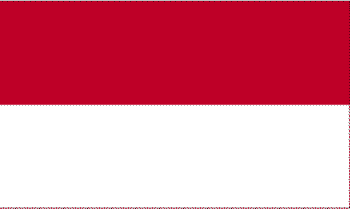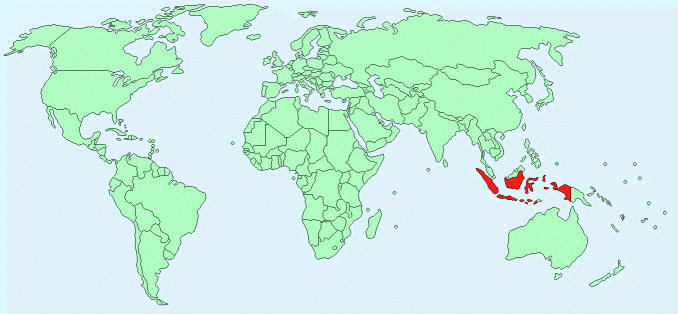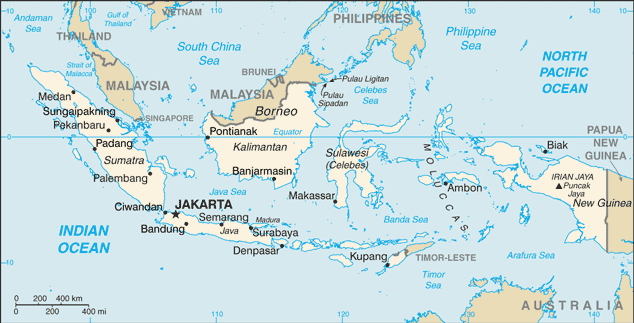Indonesia


Continent – Asia
Region – South-East Asia
Size – 1,904,569 km²
Geography – archipelago of 17,508 islands, mostly coastal lowlands; larger islands have interior mountains
Language – Bahasa Indonesia, English, Dutch, local dialects
Religion – Muslim 86.1%, Protestant 5.7%, Roman Catholic 3%, Hindu 1.8%, other or unspecified 3.4%
Monetary Unit – Rupiah
Natural Resources – petroleum, tin, natural gas, nickel, timber, bauxite, copper, fertile soils, coal, gold, silver
Agriculture – rice, cassava (tapioca), peanuts, rubber, cocoa, coffee, palm oil, copra; poultry, beef, pork, eggs
Industry – petroleum and natural gas, textiles, footwear, mining, cement, chemical fertilizers, plywood, rubber, food, tourism

Neighbouring Countries – East Timor, Malaysia, Papua New Guinea
Population – 253,609,643 (2014 estimate)
Population Growth Rate – 0.95%
Average Life Expectancy – 72.17 years
Capital City – Jakarta (9,769,000)
Highest Mountain – Puncak Jaya (5,030m)
Longest River – Kapuas River (1,143km)
Climate – tropical, humid climate 25°C to 27°C,
Yearly Rainfall – 180 – 320cm (approx) in lowlands and 610cm (approx) in the mountain areas.
Plant Life – rain forest vegetation, hill forest and mountain forest trees, sub alpine shrubs including teak, pinewood and bamboo
Animal Life – different species found on different islands include orangutan, monkey, elephant, tapir, wild ox, reptiles and amphibians
Bird Life – many different species
Marine Life – wide variety of marine species inhabit surrounding coral
Harvard Reference for this page:
Heather Y Wheeler. (2015). Indonesia. Available: https://www.naturalhistoryonthenet.com/Facts_Figures/Country_Facts/indonesia.htm. Last accessed Monday, July 18, 2016
Facts and Figures Pages
